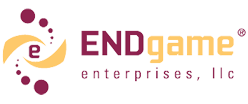The Trouble With Public Education
 Pretty much everyone in this Country knows the U.S. takes a dim view of child labor. Our Fair Labor Standards Act prohibits the employment of children under the age of 16 in jobs that endanger their health and safety. The number of hours they can work is restricted as is the list of occupations they may undertake. A primary reason for the protection of the young is to preserve their academic opportunities, which, for most, exist in our unionized public education system.
Pretty much everyone in this Country knows the U.S. takes a dim view of child labor. Our Fair Labor Standards Act prohibits the employment of children under the age of 16 in jobs that endanger their health and safety. The number of hours they can work is restricted as is the list of occupations they may undertake. A primary reason for the protection of the young is to preserve their academic opportunities, which, for most, exist in our unionized public education system.
But, rather than safeguarding the educational options of our children, teachers unions are slowly dismantling them. In their perpetual power–grabbing brawl with the world, unions are forcing children to labor in classrooms under conditions that endanger their scholarly lives. How about that for a violation of the FLSA?
The problem is that teaching and teachers unions mix like oil and water. The goals of teaching are centered on the advancement of students, both academically and in life in general. The focus of teachers unions is on the advancement of the unions. This means pushing teacher benefits ever higher while stonewalling performance evaluations, overlooking declining student achievements and advocating watered-down curricula. It even calls illegal “work stoppages” during the school year.
In 2009, the National Education Association, the largest teachers union in the Country, published a report on teacher evaluation methods. The report begins by acknowledging the shortcomings of current evaluation practices. It notes that, using those methods, a whopping 90% of teachers are rated as top performers while only a tiny percentage are unsatisfactory. It also points out that the current system allows underperforming teachers to remain in the workforce while denying an upward career path based on excellence. The report goes on to review several ‘promising’ teacher evaluation models and the criteria by which to judge them.
Unfortunately, the first NEA requirement for the acceptance of any performance evaluation method is teacher buy-in. The union fails to see the irony in requiring the approval of those who are overrated or failing to discharge their duties. There’s nothing like allowing underperformers to set the standards by which they will be judged.
While the unions push back against meaningful teacher evaluations, our students continue to trail children from other countries in international assessment tests. In the latest results, American kids rank 14th in reading, 17th in science and 25th in math out of 34 countries. And the decline has been going on for years, as teachers unions continue to strengthen.
Unions blame the lack of performance on underfunded schools. And money is one of the issues, thanks mainly to the teachers unions. Teachers salaries are 40% of a school’s operating budget, which denies funds for other educational sources. Additionally, the outcome of union bargaining boosts the cost of public education by 15%. Is the total cost worth it? Not if the measure is student performance. While average students who attend schools in union districts do perform better on standardized tests, low-performing and higher-performing students score worse. Unions, in essence, create black holes of mediocracy. No wonder U.S. students perform poorly in international competitions.
Because taxpayers view public education as a truly messed up system, some states are fighting back. Florida’s governor is proposing a teacher’s merit pay law. And Connecticut is considering restructuring teacher evaluations. But, progress is piecemeal and slow. Unions are, after all, a powerful political force. They also endlessly complicate the issues. They throw up so many objections to policy changes that the way forward is obscured in a muddy haze.
The best way to clear the air is to get back to basics. Way back, to the days without unions when teachers focused on student achievement, test scores were a lot higher and we were a lot stronger for it.
See you in the mirror.







